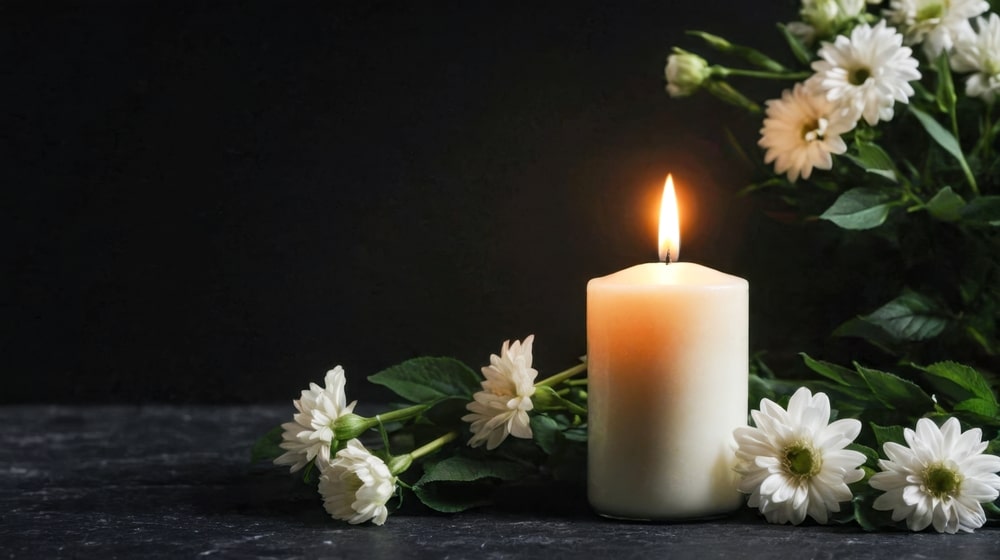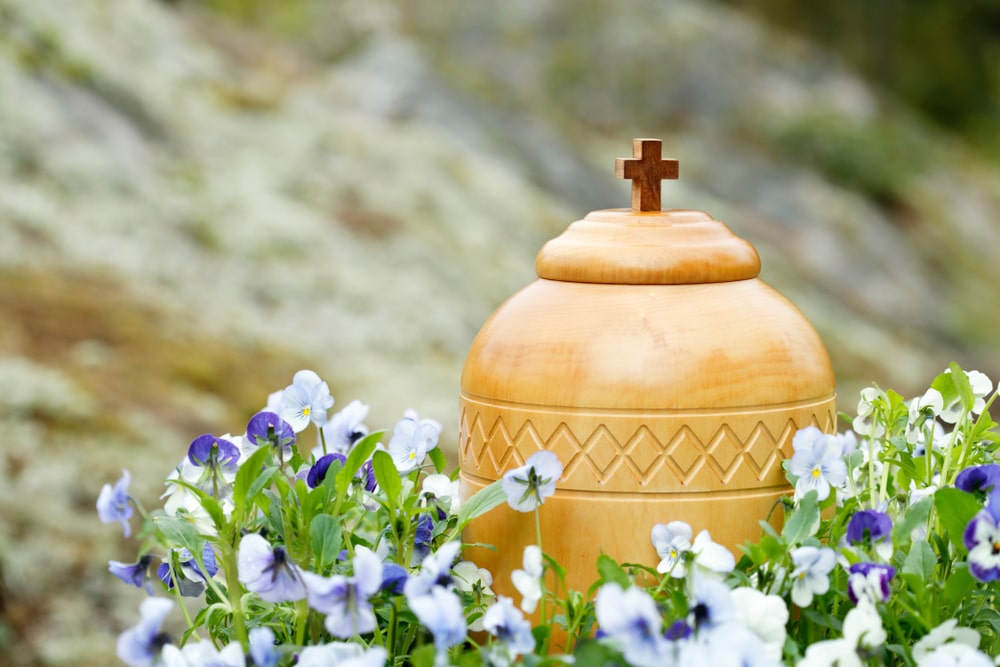
Starting in the mid-1800s, there was a shift in funeral care. This shift was mainly due to the influence of Queen Victoria’s mourning practices on the Western World and the rise of embalming after the assassination of President Abraham Lincoln. The expectation for funerals came to include embalming, a viewing and visitation, service, funeral procession, graveside service, as well as a headstone.
While many people today still choose a traditional funeral as outlined above, things have changed in the last 150+ years. Now, funerals aren’t one-size-fits-all. You get to make more choices regarding how you want your life remembered and celebrated.
So, let’s talk about 5 key ways that you get to choose what’s right for you.
1. Choose Your Service
One way you can customize the funeral to fit your needs and personality is by choosing the type of service you want. For example, would you like a traditional funeral service? Or perhaps you’d prefer a memorial service after cremation has taken place? Would you like a viewing or a visitation? If so, would it be a private event or a public event? Alternatively, you might prefer to have your ashes scattered in a special place by the people closest to you.
While the options mentioned above are for the sake of example, you can talk with your family and a trusted local funeral home to better understand all of the possibilities. Then, with that information in hand, you can put your funeral plans in writing so that your loved ones know exactly how to honor your life after you’re gone.
For more resources on the types of services you could select, check out the articles below:
- What’s the Difference Between a Funeral and Memorial Service?
- 7 Tips for Planning a Memorial Service
- Cremation and the Importance of Ceremony
- 3 Reasons to Have a Visitation
- 3 Ways an Open-Casket Funeral Helps You Heal
2. Choose Your Disposition
The two most common forms of final disposition in the United States are burial and cremation. While there are pros and cons to each, the choice is up to you. With burial, you can choose traditional burial with or without embalming, or you can opt for green burial. Similarly, with cremation, you can choose cremation by heat or by water.
When deciding which to choose, make sure you consider your family’s needs and your own personal convictions. For example, someone who wants to leave a smaller environmental impact could choose green burial or water cremation, the two options with the smallest footprint. However, if having a viewing is essential to your family or religious needs, you might choose have one before burial or cremation takes place. It’s entirely up to you and your family.
A few lesser used forms of disposition are burial at sea, recomposition burial (only available in select states), or body donation to science. For more information about all of these forms of final disposition, check out the resources below:
- Burial FAQs: What Are Your Burial Options?
- Answering Your Green Burial Questions
- What Should I Know When Considering Cremation?
- 5 Alternative Methods of Final Disposition
- What You Need to Know About Burial at Sea
- FAQ: Donating Your Body to Science
3. Choose Your Final Resting Place
Next up is choosing your final resting place. Not only can you personally choose the cemetery, but you also decide what kind of placement you want. With burial, you could opt for a single or double plot, a mausoleum, or even an above-ground crypt, to name a few. The cemetery may even have options like choosing a plot near a pond, a bench, or a lovely view.
On the other hand, with cremation, you could choose placement in a columbarium, a glass-front niche, scattering (at a cemetery or a special place), or even urn burial. Depending on the cemetery, there may be other options available. And if you are a veteran, there are national and state veteran cemeteries to consider as well as veterans’ burial benefits.
For more information about choosing a final resting place, check out the resources below and start talking with cemeteries in your area. You can consider the options available at each one and decide which works best for you.
- 11 Questions to Ask When Choosing a Cemetery Plot
- Do You Know About These 8 Cemetery Expenses?
- 5 Questions to Ask When Selecting a Casket
- Quick Guide: Selecting and Installing a Grave Marker
- 6 Ways to Personalize a Memorial Marker
- 11 Meaningful Ways to Honor Your Loved One’s Ashes
- Selecting a Cremation Urn
4. Choose Your Personalized Details
Personalization is perhaps the best way to create a truly unique final tribute. Special touches and custom details tailor the service to tell the story of your particular life and its events. There are so many ways to personalize the funeral. Just think – weddings, birthday parties, anniversary celebrations, they all look different because they are custom to the people being celebrated. The same personalization can be true for any funeral or memorial service.
When adding meaningful details, there are a number of things to consider. You could add personalized music, readings, symbols, actions, or choose a unique location. You could also include photos, a memorial tribute video, or serve the deceased’s favorite foods at the reception.
The options are truly endless, so check out these resources and then discuss personalization with a trusted funeral director. They will brainstorm with you, discuss the possibilities, and work to make them a reality.
- Practical Ways to Personalize the 7 Elements of a Funeral
- 10 Ideas for Making a Funeral More Personal
- 6 Ways to Personalize a Casket
- Using Color to Personalize a Service
- 10 Ways to Use Photos to Personalize a Service
- Why Does Funeral Personalization Matter?
5. Choose Your Budget
One important aspect of the funeral that’s in your hands is cost. While you can’t control the cost of materials, merchandise, and services, you do get to decide which ones you want. The Federal Trade Commission requires that every funeral home have a General Price List that outlines all of their services and merchandise. With this list, you can pick and choose what you want and ensure that the cost of the funeral stays within your budget.
Plus, at a good funeral home, the staff will work with you to create a personalized plan that fits your needs. So, go to the funeral home with a realistic range of what you are willing to spend on a service, and they will work with you to honor that. If they push you toward the most expensive options, that’s a warning sign that you should find another funeral home to partner with.
- What is the Average Cost of a Funeral?
- Know Your Rights: The FTC Funeral Rule
- Top 10 Characteristics to Look for in a Funeral Home
- Identifying a Dishonest Funeral Home: 7 Warning Signs
Next Steps: Record Your Wishes for the Future
And one final thing that must be included is the importance of writing down your wishes once you’ve made decisions. It doesn’t do your family any good if you’ve decided what you want but never communicate it. Thankfully, planning ahead (also known as preplanning or advance funeral planning) is very common and can take an incredible weight off your family’s shoulders. Simply make an appointment at your chosen funeral home to get started. With your funeral plans written down, your family will have a roadmap to understanding what you want. Otherwise, they may be left scrambling after the loss, not sure what to choose.
Also, if you wish, you can pay in advance or set up a funeral insurance policy to cover the total cost. Alternatively, you can set aside funds in your personal accounts or use a life insurance policy. However, keep in mind, setting aside enough funds may be difficult due to rising costs and inflation. And with life insurance policies, funds may not be available for 6-8 weeks. This means your family may need to pay out of pocket for any funeral services and be reimbursed later.
To learn more about the benefits of planning ahead and how to pay for a funeral, check out the resources here:
- What is Advance Funeral Planning?
- What to Expect at a Preplanning Appointment
- How to Get Started with Funeral Preplanning
- 5 Emotional Benefits to Funeral Preplanning
- 6 Ways You Can Save Money with Funeral Preplanning & Prefunding
- 3 Funeral Insurance Options You Should Know About
- Understanding Prepaid Funeral Insurance Policies
By writing down your funeral wishes, you can communicate your personalized preferences to those you love. And with that information, they can make sure that your final tribute isn’t one-size-fits-all. It’s the size that uniquely fits YOU.










